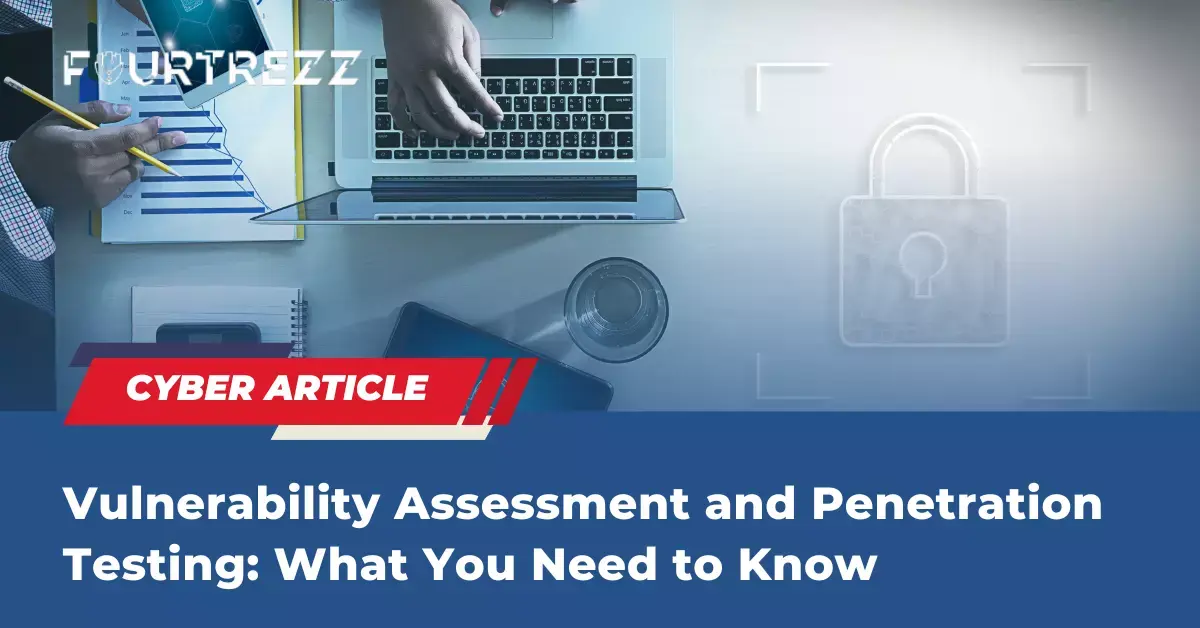Jumat, 1 September 2023 | 4 min read | Andhika R
Vulnerability Assessment and Penetration Testing: What You Need to Know
Vulnerability Assessment and Penetration Testing (VAPT) is a process used to evaluate the vulnerabilities of a system, network, or application and test its ability to defend itself against deliberate attacks by unauthorized parties. The VAPT process includes an assessment of the system, network, or application vulnerabilities, as well as a penetration test to exploit those vulnerabilities to test the system's ability to defend itself against attacks.

Vulnerability Assessment
Vulnerability Assessment (VA) is a process used to evaluate the vulnerabilities of a system, network, or application. This process is carried out using appropriate tools to identify vulnerabilities that exist in the system, network, or application. The purpose of this process is to determine the level of vulnerability that exists in the system, network, or application so that it can be fixed before an attack actually occurs.
Penetration Testing
Penetration Testing, on the other hand, is a layered security assessment that uses a combination of machine and human-led techniques to identify and exploit vulnerabilities in infrastructure, systems, and applications. Penetration Testing is conducted by ethical hackers who will provide a post-assessment report that details each vulnerability found and remediation guidance to help address it.
Penetration Testing is the most in-depth security assessment available. By leveraging modern adversarial techniques and intelligence, red teams simulate a real-world adversary approach to test an organization's ability to detect and respond to ongoing threats.
Why VAPT is Important?
Vulnerability Assessment and Penetration Testing (VAPT) is an important process that organizations should conduct to determine the security posture of their systems, networks, or applications. VAPT aims to identify vulnerabilities that exist in systems, networks, or applications before an attack occurs, so that those vulnerabilities can be fixed before an attack actually occurs. By conducting VAPT, organizations can determine the security posture of their systems, as well as take the necessary actions to improve the security of those systems.
VAPT is also important to conduct to identify vulnerabilities that exist in systems, networks, or applications. These vulnerabilities can be weaknesses in systems, networks, or applications that can be exploited by unauthorized parties. By identifying these vulnerabilities, organizations can take the necessary actions to close those vulnerabilities before an attack occurs.
In addition, VAPT is also a way to meet the standards and regulations that apply to system, network, or application security, including GDPR, ISO 27001, and PCI DSS. For example, if an organization is involved in the security of banking or healthcare systems, then VAPT is one of the obligations that must be met to meet the applicable standards and regulations.
Overall, VAPT is an important process for organizations to determine the security posture of their systems, networks, or applications, identify vulnerabilities that exist in systems, networks, or applications, and meet the standards and regulations that apply to system, network, or application security.
Differences Between Vulnerability Assessment and Penetration Testing
Here are some of the differences between Vulnerability Assessment and Penetration Testing:
| Vulnerability Assessment | Penetration Testing |
| Identifies vulnerabilities | Exploits vulnerabilities |
| Uses automated tools | Uses both automated tools and human-led techniques |
| Is typically less expensive | Is typically more expensive |
| Is a good starting point for organizations that are new to security testing | Is a more advanced security testing technique |
What Can Be Tested?
In Vulnerability Assessment and Penetration Testing (VAPT), there are various types of systems, networks, and applications that can be tested. Here are some examples that can be tested in VAPT:
- Operating systems: Operating systems are software that is responsible for managing and controlling all hardware and software on a computer. Operating systems that are often tested in VAPT are Windows, Linux, and macOS.
- Networks: A network is a collection of devices that are connected to each other to exchange data and information. Networks that are often tested in VAPT are local area networks (LANs), wide area networks (WANs), and the internet.
- Applications: Applications are software that is responsible for performing a specific function, such as creating documents, managing data, or sending emails. Applications that are often tested in VAPT are web applications, desktop applications, and mobile applications.
The systems, networks, and applications mentioned above are just a small fraction of what can be tested in VAPT. There are many other systems, networks, and applications that can be tested in VAPT, such as online payment systems, physical security systems, and others.
To learn more about how Vulnerability Assessment and Penetration Testing (VAPT) can help your organization, contact Fourtrezz today. We offer a free consultation to help you understand your security needs and develop a plan to improve your security posture. Fourtrezz, a company dedicated to effective cybersecurity solutions. If you have any inquiries or require further assistance, please do not hesitate to reach out to us via WhatsApp: 0857-7771-7243 or through email at [email protected]. Obtain the benefit of a complimentary consultation service now!
Andhika RDigital Marketing at Fourtrezz
Artikel Terpopuler
Tags: Crypto-Agility, Keamanan Enterprise, Kriptografi Kuantum, Migrasi Kunci, NIST PQC
Baca SelengkapnyaBerita Teratas
Berlangganan Newsletter FOURTREZZ
Jadilah yang pertama tahu mengenai artikel baru, produk, event, dan promosi.



